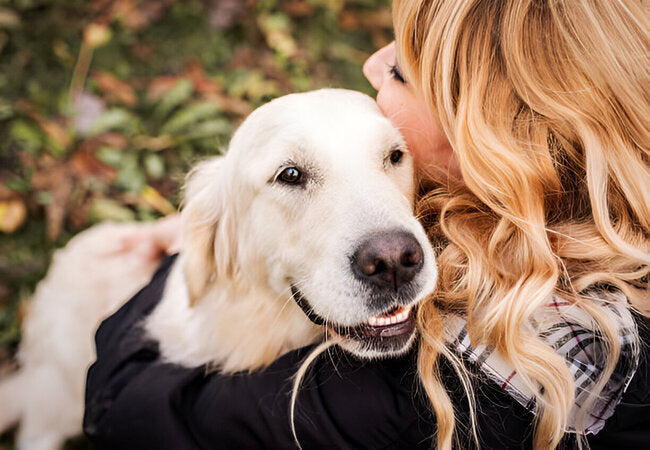You’re Not a Bad Pet Parent If Your Dog Doesn’t Like to Cuddle in 2025 – Vet‑Approved Insights & Compassionate Guidance 🐶💤

In this article
You’re Not a Bad Pet Parent If Your Dog Doesn’t Like to Cuddle in 2025 – Vet‑Approved Insights & Compassionate Guidance 🐶💤
By Dr. Duncan Houston BVSc
You love your dog, but not all dogs enjoy close contact. If yours shies away from snuggles, take heart: this is normal. In this vet‑approved 2025 guide, I’ll share why some pups avoid cuddles, how to recognize their feelings, and ways to bond that honor their comfort, nurture connection, and keep your relationship strong. Let’s dive in with empathy, respect, and understanding. 🐾❤️
1. 🧬 Why Some Dogs Avoid Cuddles
A. Personality & Breed Tendencies
Dogs are individuals—some breeds are affection-prone (think Golden Retrievers, Cavaliers), others are more independent. Your dog’s personality matters most—couch‑lion or aloof observer, it’s not about love, just preference.
B. Comfort & Physical Sensitivity
Hugs and close contact may feel intrusive or even painful for pups with arthritis or soreness. They’d rather keep movement unrestricted.
C. Past Experience & Border Preferences
Rescue dogs or pups with handled trauma may associate touching with discomfort. Dogs have a “cuddle bubble”—respected by choice.
2. 🐾 Decoding Their Body Language
- Avoidance: walking away or sitting at a distance
- Stress cues: lip‑licking, yawning, averted head
- Saying “no thanks”: stiff posture, closed eyes, tail lowered.
Watching these signals helps you respect their preference—this is empathy in action.
3. ✅ Vet‑Approved Ways to Bond Without Cuddling
A. Choicey, Low-Key Affection
- Use gentle scratches at their preferred petting spots—chest, base of tail, behind ears.
- Pet when they invite contact: leaning in, nudging your hand.
B. Quality Time Without Pressure
- Shared walks, training, or enrichment—no lap required.
- Play, puzzle toys, sniff work, or scent lessons build trust.
C. Respect Their Space
- Create safe zones—a crate or bed no one intrudes into.
- Step away if they show discomfort, rewarding retreat with calm reassurance.
D. Gentle Gradual Desensitization
- Over time, offer soft touch during relaxed moments—don’t rush.
- Pair with treats to build positive associations.
E. Medical & Behavioral Check‑in
- Discomfort can hinder cuddling—ask your vet to check for pain or skin issues.
- Behavior concerns? Consider a vet behaviorist’s perspective.
4. 🧠 Dogs Experience Comfort & Trust Differently
Cuddling releases oxytocin, a happy bonding hormone. But dogs have diverse ways of signaling affection. Leaning, follow-along behavior, relaxed presence, and play can be just as meaningful, even more so if cuddling feels stressful to them.
5. 📝 Quick Reference Table
| Behavior | Meaning | Recommended Response |
|---|---|---|
| Avoids cuddles | Needs personal space, comfort issues | Give choices, quiet bonding activities |
| Shows stress signals | Touch feels uncomfortable or intrusive | Stop contact, allow retreat, treat |
| Leans in, nudges | Welcomes calm contact | Offer gentle petting, reward relaxed behavior |
| Open to slow touch | Curious, testing comfort | Use treats + soft strokes, in a calm setting |
6. 📱 Ask A Vet App 2025 Support
- 📹 Upload videos of your dog’s response to touch—get expert vet/behavior feedback.
- 🧭 Receive tailored bonding plans—touch opportunities, enrichment exercises, and confidence games.
- 💬 Live behaviorist chats to refine your connection method and respond to any stress signals.
❤️ Final Thoughts
Not cuddly? That’s okay. Respecting your dog’s preferences is the foundation of loving, trust-based relationships. With empathy, patience, and creative bonding methods, you can strengthen your bond without losing your dog’s comfort or confidence. In 2025, compassionate pet parenting honors each dog’s unique personality—and celebrates connection on their terms. 🐾💖
Need personalized help? Visit AskAVet.com or download the Ask A Vet app for expert guidance on respecting your dog’s boundaries and deepening your bond.






